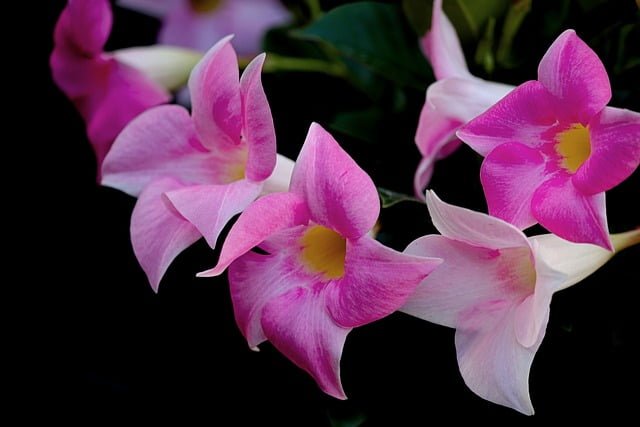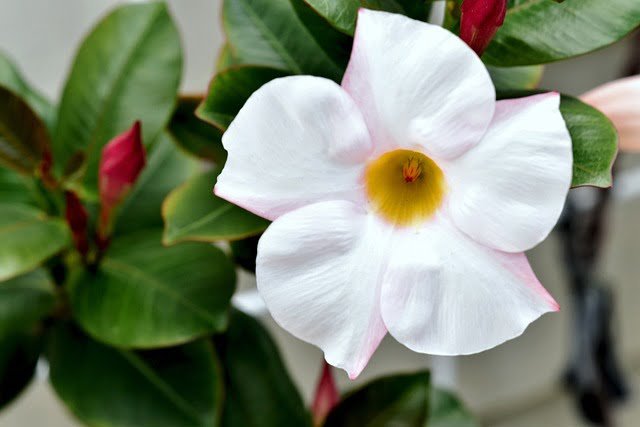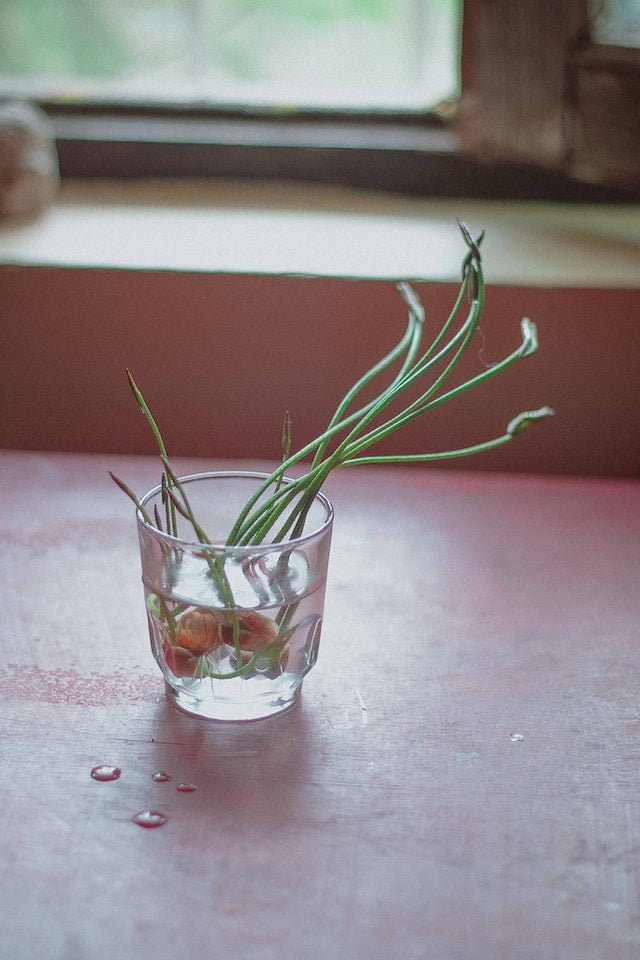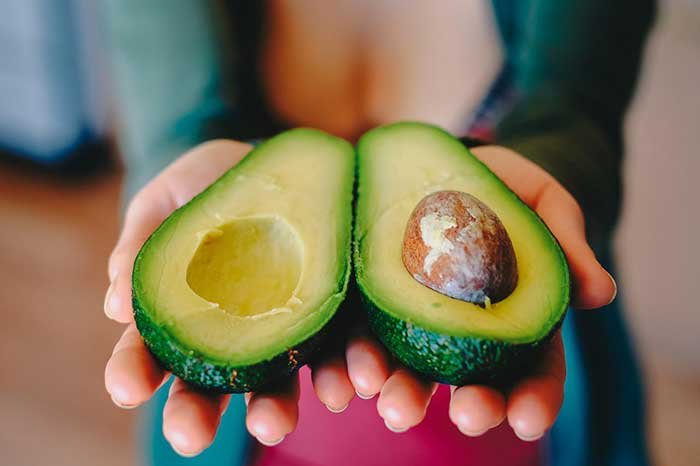Are you ready to unlock the secrets of Mandevilla propagation and take your gardening skills to new heights? If you’ve ever marveled at the beauty of these vibrant, trumpet-shaped flowers and wondered if you could multiply their splendor in your own garden, you’re in for a treat. In this guide, we’ll delve into the captivating world of Mandevilla propagation, breaking it down into simple steps that even a novice gardener can follow. Get your gardening gloves on, and let’s dive in!

Understanding the Art of Plant Propagation
Before we embark on this journey, let’s grasp the concept of plant propagation. Imagine becoming a plant magician, conjuring new Mandevilla plants from a single parent. Propagation is the horticultural term for creating more plants from existing ones, and it’s a way to spread the enchantment of your favorite flora far and wide.
Why Propagate Mandevilla?
You might be wondering, “Why should I bother propagating Mandevilla when I can just buy more?” Great question! Propagation not only lets you create a larger Mandevilla family but also offers a gratifying sense of accomplishment. Plus, it’s a budget-friendly way to multiply your garden’s allure without breaking the bank.
The Toolbox of Techniques
Mandevilla propagation isn’t a one-size-fits-all endeavor. We have a trio of techniques up our sleeves, each with its own unique charm.
Stem Cuttings: Crafting New Beginnings
Picture this: you carefully snip a healthy stem from your Mandevilla parent and give it a new lease on life. That’s stem cutting propagation for you. Grab your pruning shears and let’s get started!
- Selecting Your Superstar: Choose a vigorous parent plant that’s bursting with life. We want its offspring to inherit the best qualities, after all.
- Gather Your Arsenal: Pruning shears, a clean cutting tool, rooting hormone, and a container with well-draining soil are your trusty sidekicks.
- Snip and Root: Make a clean cut just below a leaf node, dip the cutting in rooting hormone, and plant it in the soil. Keep the soil moist, but not soggy, and watch as roots take shape.
- Babysitting the Cuttings: Provide your cuttings with ample indirect light, keeping them warm and cozy. Patience is key as you wait for them to grow strong roots.
- New Home Sweet Home: Once those roots are partying underground, transplant your cuttings into larger pots. Give ’em space to stretch their legs!
Layering: Nature’s Embrace
Layering is like a nurturing hug from Mother Nature herself. With this method, your Mandevilla sends out roots while still attached to the parent plant, creating a seamless transition for the new plantlet.
- Choose Your Limb: Identify a flexible lower branch on your parent Mandevilla – it’s the chosen one for layering.
- Bend and Secure: Gently bend the branch to the soil, secure it in place, and make a shallow cut or scrape where it touches the ground. Encourage those roots to emerge!
- Patience and Protection: Cover the buried section with soil and keep it moist. Shield your developing layer from intense sunlight as it establishes roots.
- Release the Offspring: Once the layer has rooted, snip it from the parent and give it a pot of its own. Voilà – a brand new Mandevilla in the making!

Seed Propagation: Nature’s Grand Plan
Seeds hold the promise of Mandevilla’s future. While a bit more patience is required with this method, the anticipation is half the fun!
- Harvesting Seeds: Allow your Mandevilla flowers to fade and form seed pods. Harvest those pods and extract the tiny, magical seeds within.
- Sowing the Seeds: Plant the seeds in a well-draining soil mix, providing them with just enough depth to snuggle in comfortably.
- Nurturing Seedlings: Keep the soil consistently moist and provide gentle sunlight as your little seedlings sprout and grow.
- Up, Up, and Away: Once your seedlings are robust enough, transplant them to larger containers. Witness their journey from tiny seed to magnificent Mandevilla!
Timing and Conditions: Where Magic Happens
As any magician knows, timing and environment are key ingredients for a successful performance. Mandevilla propagation is no different.
Ideal Propagation Period
Timing is everything, and Mandevilla propagation thrives during the warm months of spring and summer. These vibrant plants adore the sun’s embrace, so ensure your propagations receive plenty of sunshine.
Temperature and Humidity
Mandevilla enjoys a cozy environment with temperatures around 70-80°F (21-27°C). Maintain a humidity level around 50-60% to provide the perfect conditions for growth.
Soil and Containers
Roots need space to dance, so choose well-draining soil that prevents waterlogging. Opt for containers with drainage holes, allowing excess water to escape and keeping your plants happy.
Light and Shade Dance
Mandevilla thrives under the spotlight but appreciates a little shade from scorching midday sun. Morning sunlight and dappled afternoon shade make for a splendid performance.
Tender Love and Care for Propagated Mandevilla
Just like nurturing a fledgling bird, your propagated Mandevilla needs tender care and attention to blossom into its full glory.
Watering Wisely
Strike a balance between hydration and overwatering. Allow the top inch of soil to dry before you rehydrate your plant, preventing root rot and fostering healthy growth.
Nutrient Nourishment
Feed your Mandevilla with a balanced, water-soluble fertilizer every 2-3 weeks during the growing season. It’s like serving up a sumptuous feast for your flourishing foliage.
Pruning with Purpose
Trim away faded flowers and leggy growth to encourage lush, bushy growth. Pruning helps direct energy where it matters most, resulting in a Mandevilla masterpiece.
Defend Against Pests and Diseases
Be a vigilant guardian and keep an eye out for pests like aphids and mealybugs. A gentle wipe with soapy water can send these unwanted visitors packing.
Navigating Common Propagation Quandaries
As you embark on your Mandevilla propagation adventure, you might encounter a few hiccups along the way. Fear not – we’re here to guide you through some common challenges.
Rooting Woes and Rescues
If your stem cuttings are dragging their feet in the rooting department, try misting the leaves to boost humidity. A little extra moisture can work wonders.
Fungal Frustrations
Mold or fungal growth in your soil? Ease up on watering, improve air circulation, and ensure your plants aren’t crowding each other.
Pests: Uninvited Guests
Pesky insects crashing the party? Introduce beneficial insects like ladybugs to the scene, or employ natural remedies like neem oil to show those pests the exit.

Nutrient Nudges
If your Mandevilla’s leaves are looking a little lackluster, it might be signaling for some extra nutrients. Adjust your fertilization routine





